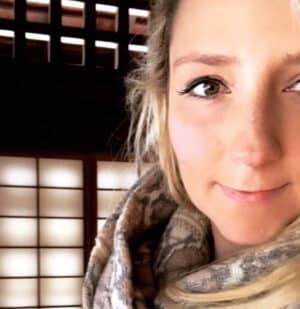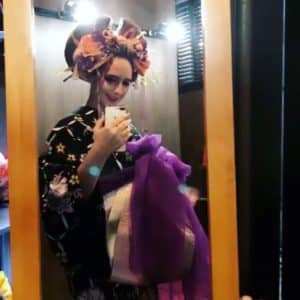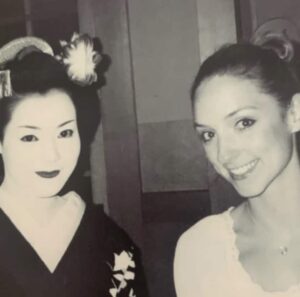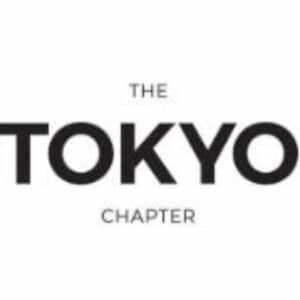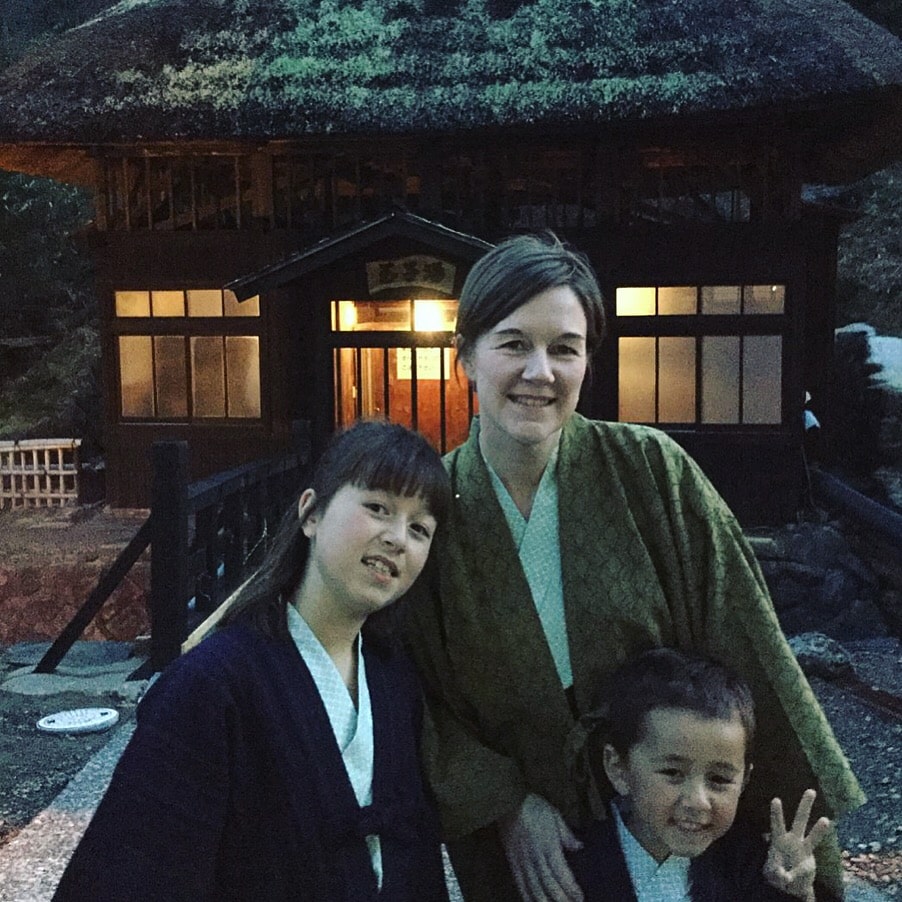
Jayne Nakata is a long term resident of Iwaki City, Fukushima.
When the earthquake and tsunami hit Fukushima in 2011, setting off a nuclear meltdown, Jayne was 7 months pregnant with her first child, living less than 50 km from the power station.
Over 10 years later, she’s on a mission to help her town recover from the disaster.
Her popular podcast “Transformations with Jayne”, helps women living in Japan to find support and inspiration to live their best lives.
Jayne is sharing all of her favourite “Off the Beaten Path” places and tips for travelling around this beautiful part of ” Real Japan. “
OFF THE BEATEN PATH: FUKUSHIMA TRAVEL
Fukushima.It’s a place that has created a lot of fear since the massive earthquake in 2011 set off a tsunami that damaged the Dai Ichi power station, causing a nuclear meltdown.
That was more than 10 years ago. A lot of people are now wondering: What’s happening in Fukushima today? Is it safe to travel there? How can I help? If that is you, then please read on.
IS IT SAFE TO TRAVEL IN FUKUSHIMA?
YES! Now less than 3% of the whole prefecture is in the “No Go Zone”. That’s a tiny tiny part that, to be honest, you probably wouldn’t visit anyway.
WHERE IS THE 3%?
The rest of the prefecture is now experiencing radiation levels that are similar to anywhere else in Japan.
In my city of Iwaki, radiation is measured daily and you can see it measured on stationary geiger counters, usually located in schools and parks.
SHOULD YOU BE WORRIED ABOUT RADIATION?
Let’s just say you’ve exposed yourself to more radiation by flying to Japan (and home again) than you will in a year of being in Fukushima.
Also, Fukushima food and water is also tested daily to make sure it’s safe to eat, so I’d say our food is safer than anywhere.
WHAT KIND OF POSITIVE IMPACT CAN VISITORS HAVE WHEN VISITING FUKUSHIMA?
I know that many readers want their trip to make a positive impact on the local communities that they visit. It’s hard to do that when you are ticking boxes of the major attractions in Tokyo or Kyoto, but in Fukushima, this is somewhere that your visit can make a real difference to small family owned businesses that have been suffering dreadfully for over 10 years since the disaster of 2011.
WHERE SHOULD YOU VISIT?
I recommend starting with the Travel Fukushima website to find all the information about the main tourist routes in Fukushima.
You can visit castles, traditional towns, beautiful mountains, go skiing, eat wonderful food and drink sake_ (rice wine)!
There is one area I’d like to introduce to you that you won’t find so much about by simply searching in English.
If you decide to visit us here, you’ll be rewarded with uncrowded places, friendly people, wonderful food and very affordable accommodation not to mention memories for a lifetime.
JAYNE’S OFF THE BEATEN TRACK ” COASTAL FUKUSHIMA”
One of the areas that has suffered the most during the disaster of 2011, was the coast of Fukushima.
Not only was it hit the worst by the earthquake, tsunami, and nuclear disaster it is the area of Fukushima still struggling to recover visitor numbers. If you visit the castles and ski areas you will see things are picking up there. Not so on the coast. So although this is very bad news for local businesses, this is great news for you, because you have a great “forgotten” place to visit.
ACCESS:
From Shinagawa, Tokyo, or Ueno station, take the “Super Hitachi” train on the Joban Line. This is a JR line so you can use your JR pass. I highly recommend taking the train to Yumoto Station which is around 2.5 hours from Tokyo in Iwaki City. Train seats are all reserved, so make sure you secure your seat by visiting a JR train ticketing office.
No JR Pass? Take a bus from Tokyo Station Yaesu South Exit to Iwaki Station and then the local Joban line train to Yumoto (2 stops). I do feel that the train is more scenic though!
WHEN TO GO?
Iwaki City is a great place to visit when Tokyo is too hot. It’s only 2 hours north but about 5 degrees cooler!
Our cherry blossom season happens a week or so later than Tokyo (Early April) so if you missed out down there, never fear! Just head north! Autumn is beautiful too, with leaves starting to turn in mid November. In winter we don’t actually have snow, even though we are near the ski areas. There is beautiful sunny weather almost every day, though things tend to look a bit, well, brown. Avoid all the national holidays as even this part of Japan gets busy then ーbut still doable.
WHAT TO DO WHILE THERE?
When the train arrives at the platform, you will notice a foot spa near the ticket gate. The free public foot baths are cleaned regularly the water is very hot, take care putting your feet in for the first time, but it makes your feet feel amazing. Like you’ve got brand new ones!
Another foot bath is located just in front of Yumoto station, another (my favourite) is located near Furutakiya Ryokan (mentioned below.)
After 3pm you can check in to your accommodation. Yumoto town is a great place to try staying in a traditional Japanese inn or “Ryokan”.
Ryokan are usually family owned, some going back up to 13 generations, so you are really contributing to the local community by staying there.
Please try to book directly. Every cent that ends up in their pockets helps, rather than a giant booking site who takes a large chunk in commission. Email is a great way to communicate with them if anything is unclear from their website.
Here are some of my favourites:
Koito Ryokan
Koito is owned by the Koito family and you will not find a more welcoming place in Japan. Their onsen water comes straight from underground and is pumped into the baths without being held or mixed with other water, to keep it’s natural healing properties. A family bath can be reserved for those who’d rather not bathe with strangers. Children are also very welcome. (LGBTQ friendly.)
Furutakiya Ryokan
13 generations have run this family ryokan, bigger than Koito ryokan, it has more hot spring bath options. Their 7th floor rooms are newly renovated, some have beds, but there are some more inexpensive room options here too. The breakfast is very simple, hence the affordability of this ryokan. (Cash only, ATM at the convenience store next door. )
Iwaso Ryokan
Another family run ryokan, the owners are always thrilled to have visitors from overseas stay. Their website doesn’t do it justice at all. They no longer serve dinner as the owners are getting older, but their breakfasts are very good. Since they no longer use have a use for the hundreds of intricate dishes used in ryokan dinner service, they are now for sale in the lobby, pop in and have a look if you are nearby.
THINGS TO DO:
Yumoto town is a place to come, rest and relax, so makes a wonderful stopover after the frantic pace of being in Tokyo, running from one thing to the next. You’ll have a chance to repair your poor tired body in the hot springs. Once you’ve done that, what kind of things can you do?
1) For kids who love dinosaurs?
Head to the Iwaki Fossil and Coal Mine Museum.
It’s walkable from your accommodation in Yumoto and has been newly reopened recently. I’d recommend it for kids from about 5 or 6 years on, younger kids tend to find it terrifying! You can see locally found fossils and dinosaur skeletons as well as see what life was like for coal miners in Japan through history.
2) Visit the Fukushima Power Station Area
Nuclear disaster tourism is increasing and now it’s safe to visit some of the towns that were evacuated.
Just one hour drive to Futaba you can visit the The Great East Japan Earthquake and Nuclear Disaster Memorial Museum and the Ukedo Elementary School ruins.
When visiting this area it is advised to take some food and drink with you and a full tank of gas as there are not many convenience stores or gas stations in this area.
3) Team Lab Planets : Hidden Traces of Rice Terraces
This brand new installation from Team Lab Planets is just 20 minutes by local train from Yumoto Onsen. Get off at Otsuko Station and then it’s just 2km away by taxi. This is a night time activity and so dress for the weather and natural location (complete with mosquitoes in the warmer months) and check for the timetable for the return train journey.
4) Benten Island
Benten Island(弁天島 ) is a spot often used in marketing Fukushima prefecture.
Parking is on the right, just before the tunnel and there is a pedestrian overbridge where you can get great views of this and then walk out onto the bridge. This bridge was also very badly damaged during the tsunami. This bridge has now been repaired as shown in this photo.
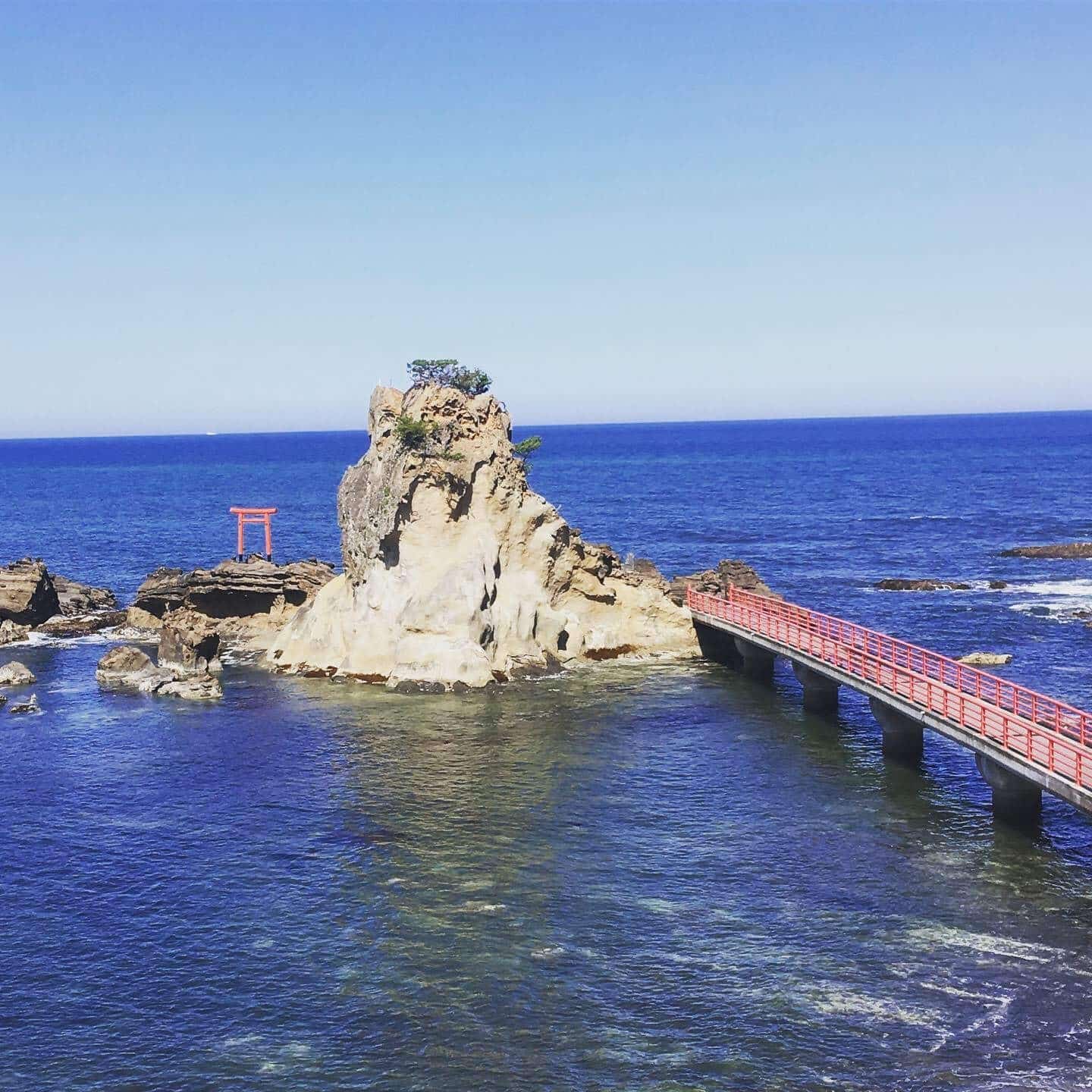
5) Try the local food & produce
In Yotsukura, head to the “Michi no Eki” which means: Road Station, a great place to enjoy local food and produce.
6) Take in the view at the Shioyazaki Lighthouse
Keep to the coast and make your way to Shioyazaki Lighthouse for views.
8) Dine out at this popular cafe
If you are lucky and there are seats available, Island Bowl-Hawaiian Cafe is hugely popular, a few minutes past Ena Town. .
11) Head to the aquarium
Then, head on to Onahama Port where you can enjoy the educational aquarium: Aquamarine Fukushima (Weekends are extremely crowded here) which has lots of hands on activities for kids, the fish markets at La La Miu and there is a large AEON shopping mall with movie theatre, a supermarket, restaurants etc.
WHERE TO FROM HERE?
Once you’ve enjoyed the hospitality and relaxation of Yumoto Town and Iwaki City, you can use your JR pass and take the local train from Yumoto to Iwaki station, change to the Banetsu Tou Line to Koriyama City.
This is a beautiful train ride through mountains and small villages.
From there you can use the bullet train to return to Tokyo, or head further north to Sendai, Iwate, Akita or Aomori and even to Hokkaido or further explore the castles, mountains and lakes of Fukushima in the Aizu Wakamatsu area, by transferring to the Banetsu Sai line.
This trip is a great way to have a positive impact on the small towns of the Fukushima coast that are still struggling more than 10 years on from the disaster. If you like to travel off the beaten path, don’t mind figuring things out if things are not all in English everywhere you go and really want to meet some wonderful Japanese people, I highly recommend this trip!
Jayne Nakata is a long term resident of Iwaki City, Fukushima. When the earthquake and tsunami hit Fukushima in 2011, setting off a nuclear meltdown, Jayne was 7 months pregnant with her first child, living less than 50 km from the power station. More than 10 years on, she’s on a mission to help her town recover from the disaster. Her popular podcast “Transformations with Jayne”, helps women living in Japan to find support and inspiration to live their best lives. You can also follow Jayne on instagram here.


